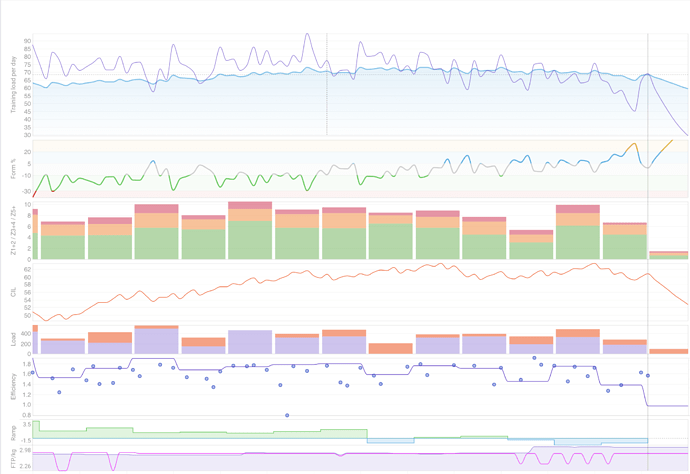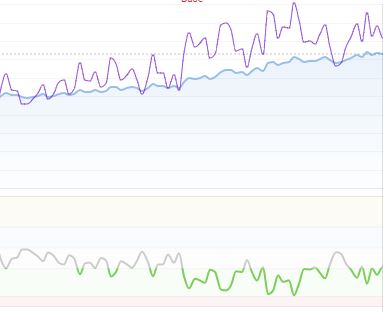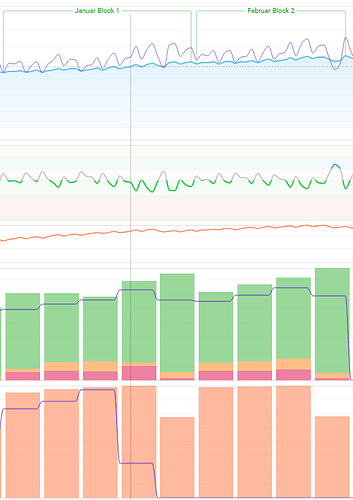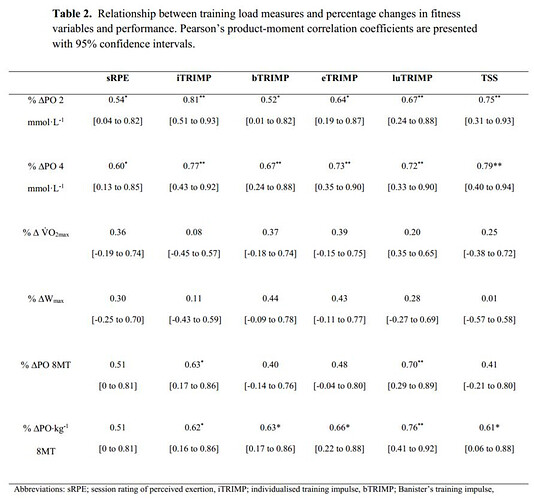I am looking at my fitness graph and it has me stumped. My fitness has gradually increased since May 2020 when I started cycling on the road. I’m up to around 70 which I’m really happy with. I now combine Peloton rides with 3 road rides a week averaging 4-5 workouts most weeks. Without delving too deep I have an indoor FTP of 226 and an outdoor FTP of 255. This has been pretty consistent for a few months.
The thing I am struggling with is that I just can’t get into the green… I am doing around about the same amount of load, some lower weeks but in general around the same and with very similar time in different zones. But now the same work done just doesn’t seem to get my fatigue up, and my fatigue number is consistently lower than at times in the past… now if my FTP is the same and the work done is the same, surely my fatigue should be the same?
I’ve looked at the detail and I can’t quite put my finger on it… as an example;
At the end of the week of 28th Nov, FTP was 255, CIL was 61, I did 5:45 in Z1&2, I did 2:25 in Z3&4 and 0:55 in Z5+ I had a load of 549, fitness of 73 with fatigue of 95…
At the end of the week of 10 Jan, FTP was 255, CIL was 59, I did 6:06 in Z1&2, I did 2:21 in Z3&4 and 1:28 in Z5+ I had a load of 536, fitness of 71 and fatigue of 75…
So why is my fatigue so much lower? That 20 points is the difference between gaining fitness and stagnation and I just can’t seem to get there with the same training against the same FTP… the only thing that has changed a bit is I am doing more internal rides, but the indoor FTP should take care of the impact this has on the fatigue number, shouldn’t it?
I’m at a loss, maybe I’m being dense so don’t be afraid of stating the obvious… can anyone help? Is there a calculation or factor I’m missing? I took a rest week last week to see if that meant I could go for an even higher load this week, but that would mean pretty much doing a hard session most if not every day… is that just what it takes to improve? Are my expectations of continuing to build fitness with this level of training unrealistic?
Sorry if this is a noob question, any input would be greatly appreciated.





